New insights into early MIS 5 lithic technological behavior in the Levant: Nesher Ramla, Israel as a case study
- PMID: 32243464
- PMCID: PMC7122790
- DOI: 10.1371/journal.pone.0231109
New insights into early MIS 5 lithic technological behavior in the Levant: Nesher Ramla, Israel as a case study
Abstract
Interpreting human behavioral patterns during the Middle Paleolithic in the Levant is crucial for better understanding the dispersals and evolution of Homo sapiens and their possible interactions with other hominin groups. Here, we reconstruct the technological behavior, focusing on the centripetal Levallois method at Nesher Ramla karst sinkhole, Israel. Nesher Ramla karst sinkhole is dated to the Marine Isotope stages (MIS) 6 and 5 and represents one of the oldest occurrences of the centripetal Levallois reduction strategy in the Near East. The Levallois centripetal technology is often seen as a marker of human dispersals and adaptations in the Middle Paleolithic/Middle Stone Age of Africa and the Near East. This technology is documented in East African sites as early as 300 kya and in the Levant as early as 130 kya. However, the degree of similarity between African and Levantine centripetal technology and whether it originates from the same source remain under debate. In this paper, we focus on describing the lithic organization at Unit III of Nesher Ramla (dated to MIS 5), which is dominated by the centripetal Levallois method in association with other reduction sequences. Both preferential and recurrent centripetal Levallois modes were used at the site to produce oval and rectangular flakes. Other minor reduction sequences include unidirectional convergent method for Levallois points production and a specific method for the manufacture of naturally backed knives. The lithic data from Unit III of Nesher Ramla is further used in inter-site comparisons suggesting that the mid-Middle Paleolithic sites in the Near East possess common technological characteristics, especially the use of the centripetal Levallois method as predominant reduction strategy. This trend differs from what is usually observed in Africa and Europe, where the centripetal Levallois method is modestly represented during MIS 5 and is accompanied by other, more dominant, reduction strategies.
Conflict of interest statement
The authors have declared that no competing interests exist.
Figures


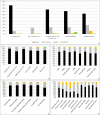




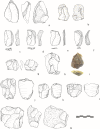


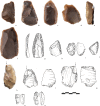
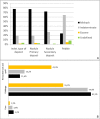

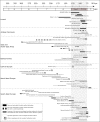
Similar articles
-
The emergence of the Levallois technology in the Levant: A view from the Early Middle Paleolithic site of Misliya Cave, Israel.J Hum Evol. 2020 Jul;144:102785. doi: 10.1016/j.jhevol.2020.102785. Epub 2020 May 16. J Hum Evol. 2020. PMID: 32428731
-
A series of Mousterian occupations in a new type of site: the Nesher Ramla karst depression, Israel.J Hum Evol. 2014 Jan;66:1-17. doi: 10.1016/j.jhevol.2013.06.005. Epub 2013 Nov 7. J Hum Evol. 2014. PMID: 24210611
-
Early Levallois core technology between Marine Isotope Stage 12 and 9 in Western Europe.J Hum Evol. 2020 Feb;139:102735. doi: 10.1016/j.jhevol.2019.102735. Epub 2020 Feb 17. J Hum Evol. 2020. PMID: 32078934
-
Going big versus going small: Lithic miniaturization in hominin lithic technology.Evol Anthropol. 2019 Mar;28(2):72-85. doi: 10.1002/evan.21775. Epub 2019 Mar 29. Evol Anthropol. 2019. PMID: 30924224 Review.
-
Flaked stones and old bones: biological and cultural evolution at the dawn of technology.Am J Phys Anthropol. 2004;Suppl 39:118-64. doi: 10.1002/ajpa.20157. Am J Phys Anthropol. 2004. PMID: 15605391 Review.
Cited by
-
Expansion of eastern Mediterranean Middle Paleolithic into the desert region in early marine isotopic stage 5.Sci Rep. 2022 Mar 16;12(1):4466. doi: 10.1038/s41598-022-08296-9. Sci Rep. 2022. PMID: 35296701 Free PMC article.
-
Directional changes in Levallois core technologies between Eastern Africa, Arabia, and the Levant during MIS 5.Sci Rep. 2021 Jun 1;11(1):11465. doi: 10.1038/s41598-021-90744-z. Sci Rep. 2021. PMID: 34075081 Free PMC article.
-
No direct evidence for the presence of Nubian Levallois technology and its association with Neanderthals at Shukbah Cave.Sci Rep. 2022 Jan 24;12(1):1204. doi: 10.1038/s41598-022-05072-7. Sci Rep. 2022. PMID: 35075192 Free PMC article. No abstract available.
References
-
- Valladas H, Mercier N, Froget L, Hovers E, Joron J-L, Kimbel WH, et al. TL Dates for the Neanderthal Site of the Amud Cave, Israel. J Archaeol Sci. 1999. March;26(3):259–68.
-
- Mercier N, Valladas H, Froget L, Joron J-L, Reyss J-L, Weiner S, et al. Hayonim Cave: a TL-based chronology for this Levantine Mousterian sequence. J Archaeol Sci. 2007;34(7):1064–1077.
-
- Rebollo NR, Weiner S, Brock F, Meignen L, Goldberg P, Belfer-Cohen A, et al. New radiocarbon dating of the transition from the Middle to the Upper Paleolithic in Kebara Cave, Israel. J Archaeol Sci. 2011. September;38(9):2424–33.
Publication types
MeSH terms
Grants and funding
LinkOut - more resources
Full Text Sources

